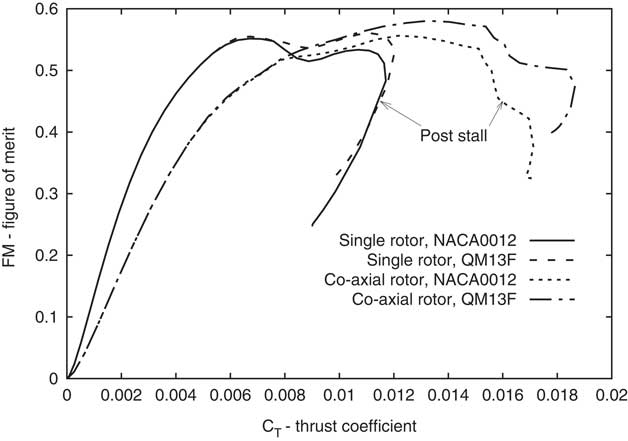Research
Propeller aerodynamics and acoustics
| Principal investigator: | Eldad AVITAL |
| Co-investigator(s): | Fariborz MOTALLEBI and |
| Funding source(s): | EPSRC |
| Start: 01-12-2016 / End: 25-03-2017 | |
| Amount: £10,000 |

Low Reynolds number blade profiles of Re_C =10^5 to 2*10^5 as as based on chord length and used for small unnamed air vehicles, and near space applications are investigated for single and counter-rotating (coaxial) proprotors, i.e. acting as rotors or propellers. Such profiles are prone for early stall, significantly reducing their maximum lift to drag ratio. Two profiles previously designed by our continuous surface curvature design approach named as CIRCLE are investigated in order to improve the performance of the proprotors. The profiles are redesigns of the common symmetric NACA0012 and asymmetric E387 profiles. Using general arguments based on composite efficiency and rotor’s lift to drag ratio, the performance envelope is noticeably increased when using the redesigned profiles for high angles of attack due to stall delay. A new approach is derived to account for the distance between the rotors of a coaxial proprotor. It is coupled with a blade element method and is verified against experimental results. Single and coaxial CIRCLE-based proprotors are investigated against the corresponding non CIRCLE-based proprotors at hover and axial translation. Noticeable improvements are observed in thrust increase and power reduction at high angles of attack of the blade’s profiles, particularly for the coaxial configuration. Plots of thrust, torque, power, composite efficiency and aerodynamic efficiency distributions are given and analysed.
AVITAL E, Korakianitis T and MOTALLEBI F (2018). "Low Reynolds number proprotor aerodynamic performance improvement using the continuous surface curvature design approach." Aeronautical Journal vol. 123, (1259) 20-38. DOI10.1017/aer.2018.124

